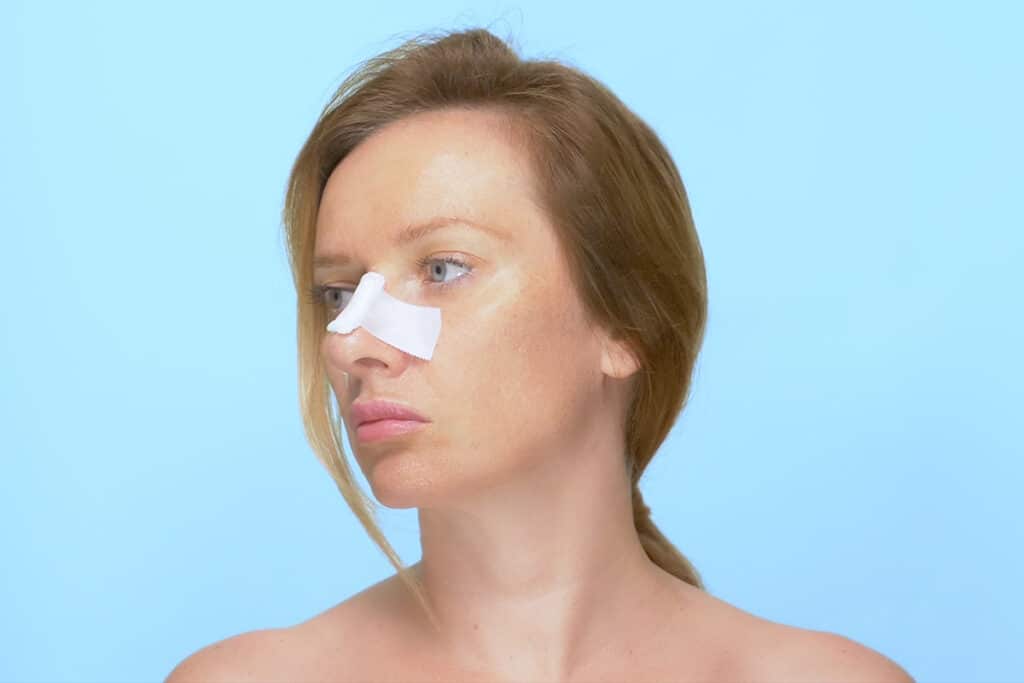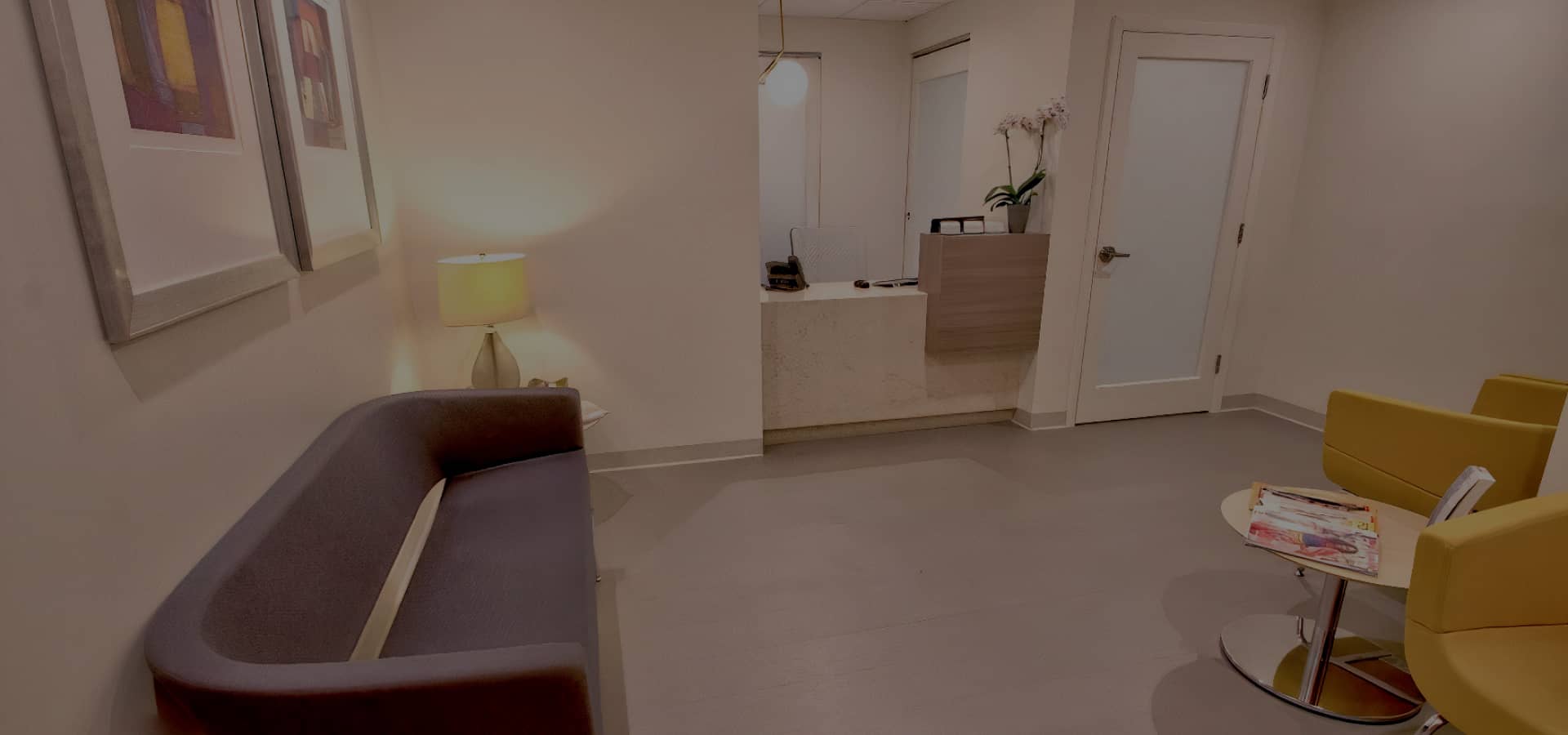Is the fear of scarring and potential infection risks holding you back from considering a revision rhinoplasty? With a strategic approach to surgeon selection, surgical techniques, personal preparation, healing management, and aftercare, find out how you can successfully mitigate these concerns. Immerse yourself into gaining knowledge to empower your decision-making and reduce risks associated with revision rhinoplasty.
Revision Rhinoplasty: Understanding the Basics
Revision rhinoplasty, unlike primary rhinoplasty, involves additional complexities due to changes in the nasal structure from the initial surgery. This procedure, often performed by a skilled rhinoplasty surgeon, aims not only to correct the aesthetic goals missed in the original procedure but also to address any functional issues. Unlike primary rhinoplasty, revision surgeries are more intricate due to the altered blood supply and scar tissue formed from the previous rhinoplasty.
Identifying Scarring Risks in Revision Rhinoplasty
Scarring is a significant concern for anyone undergoing revision rhinoplasty. This is particularly true for those who have experienced visible scarring following their initial surgery.
Types of Scars: Keloids, Hypertrophic, and Others
Different skin types respond differently to trauma, which is essential in rhinoplasty procedures. Keloid and hypertrophic scars are the most common types of visible scars. They occur when the healing process is exaggerated, leading to scar tissue that extends beyond the original wound.
Factors Contributing to Scarring
Several factors contribute to the likelihood of scar formation, including the patient’s skin type, the surgical technique employed, and the extent of changes made during the previous surgery. A skilled surgeon, preferably a board-certified plastic surgeon, will consider these factors and employ advanced techniques to minimize scar visibility.
Infection Risks in Revision Rhinoplasty
Infection risks in revision rhinoplasty can be higher compared to primary rhinoplasty due to several factors. The presence of scar tissue from the initial rhinoplasty can lead to reduced blood supply in the nasal tissues, which is crucial for healing and fighting infection. Additionally, if the previous surgery led to structural changes in the nasal passages, it could create areas that are more susceptible to bacterial accumulation. It’s also important to consider that patients undergoing revision procedures might have a compromised immune response in the nasal area due to the previous surgery, increasing the risk of infection.
Another factor that can contribute to infection risks is the complexity of the revision rhinoplasty procedure itself. These surgeries often require more intricate and prolonged surgical techniques to correct or enhance the results of the previous nose job, potentially increasing the exposure time to possible infectious agents. Moreover, if the revision involves the use of grafts or implants, it adds another layer of complexity, as these materials can sometimes serve as a medium for bacterial growth. Therefore, it’s crucial for surgeons performing revision rhinoplasty to follow stringent sterilization protocols and for patients to adhere strictly to post-operative care instructions, including taking prescribed antibiotics and maintaining proper hygiene, to minimize the risk of infection.
Recognizing Signs of Infection Early
Early detection of infection signs is crucial for prompt treatment. These signs include increased redness, swelling, pain, or discharge from the surgery site. Follow-up appointments with the rhinoplasty surgeon are vital for monitoring the healing process and identifying any signs of complications.
Strategies to Manage Scarring After Revision Rhinoplasty
Effective management of scarring begins with careful planning and technical execution during the revision rhinoplasty procedure. An experienced plastic surgeon will take measures such as using proper technique to minimize external incisions and ensure minimal disruption to blood vessels.
- Preoperative Steps: Includes understanding the patient’s medical history and analyzing the complexity of revision rhinoplasty based on the previous rhinoplasty.
- Surgical Approach: Choosing between open and closed rhinoplasty, depending on the need for access to internal structures.
- Post-operative Care: Proper post-operative care, such as avoiding heavy lifting and strenuous exercise, is crucial in preventing excessive strain on the healing tissues, thereby reducing the appearance of rhinoplasty scars.
Controlling Infection Risks: Preventive Measures
Preventing infection in revision nose job involves a multifaceted approach, beginning with the pre-operative steps and extending through to post-operative care.
- Pre-Surgical Precautions: This includes assessing any risk factors that might increase the chance of infection, such as previous allergic reactions or a history of poor wound healing.
- During Surgery: Use sterile techniques and possibly prophylactic antibiotics to minimize the risk of infection.
- Post-Surgery Protocols: Involves guidance on wound care, avoiding activities like excessive alcohol consumption that can impede the healing process, and possibly using antibiotics as a preventive measure.
The Importance of Following Doctor’s Guidelines
Adherence to the surgeon’s post-operative instructions is critical in managing the risk of complications. This includes everything from taking prescribed medications to attending all follow-up appointments. The experienced rhinoplasty surgeon provides these guidelines based on extensive experience and tailored to the individual’s specific needs and aesthetic goals.
Lifestyle Adjustments for Better Recovery
A successful recovery from a revision rhinoplasty surgery also hinges on the patient’s lifestyle choices post-surgery. These adjustments are crucial to minimize potential complications and promote a faster, more effective healing process.
Diet and Nutrition: Consuming a balanced diet rich in vitamins and minerals can significantly aid the healing process.
Balancing Activity and Rest: While light activities may be encouraged to promote blood circulation, it’s essential to avoid heavy lifting and strenuous exercise that could put undue stress on the nose structure.
Avoiding Harmful Habits: Patients are advised to refrain from smoking and excessive alcohol consumption as these can impede healing and increase the risk of complications.
Tips for Minimizing Scarring and Infection Risks
Managing the risks of scarring and infection doesn’t end with the surgery. Continuous care and precautions play a pivotal role in ensuring a desirable cosmetic outcome.
- Nasal Hygiene: Keeping the nasal bridge clean is key to preventing internal scarring and infections, crucial for both cosmetic results and improved breathing post-surgery.
- Sun Protection: Limit sun exposure to prevent scars from becoming more noticeable; use sunscreen and wear protective hats.
- Head Elevation: Elevating the head, especially while sleeping, aids in reducing swelling and preventing blood clots, promoting complete healing.
- Nasal Packs: If used, the application of nasal packs stabilizes the nasal structure and aids in healing, following the goal of revision rhinoplasty.
- Personalized Recovery Instructions: Adhering to recovery instructions, including wound care, is vital for achieving the ideal nose and ensuring a successful healing period.
- Monitoring Incisions: Regularly check incisions for signs of infection or poor healing, as clean and dry wounds heal better.
- Stress and Physical Activity: Manage stress and avoid strenuous activities to reduce risks of complications that can affect the recovery process.
- Diet and Hydration: A nutritious diet and proper hydration support the body’s healing, aligning with the desired outcome of the cosmetic surgery.
- Medication and Supplements: Discuss all medications and supplements with your surgeon; some may increase bleeding risk and should be avoided.
- Follow-Up Appointments: Attend all follow-up appointments to allow your surgeon to monitor your progress and address any concerns promptly.
Emphasizing the Importance of Careful Management
In conclusion, managing scarring and infection risks in revision rhinoplasty requires a comprehensive approach involving skilled surgical technique, thorough pre-operative planning, diligent post-operative care, and lifestyle adjustments. By understanding these aspects, patients can significantly improve their outcomes and satisfaction with the revision rhinoplasty procedure.

When considering revision rhinoplasty, the expertise of your surgeon is paramount. It’s essential to choose a surgeon who not only possesses the necessary technical skills but also has a deep understanding of the complexities of revision procedures.
In Miami, Dr. Bared offers this blend of expertise and experience, guiding patients through the intricacies of revision rhinoplasty to achieve the best aesthetic and functional outcomes. Adhering to the advice and post-operative care instructions provided by Dr. Bared can significantly enhance your surgery’s success. For expert guidance on your revision rhinoplasty journey, consider consulting with Dr. Bared.

